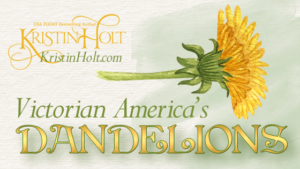Victorian America’s Fried Chicken
Victorian America (1937 to 1901) inherited a love for fried chicken from the centuries before it. Thus we can’t claim “Victorian America’s Fried Chicken” as if they invented the to-die-for dish. Historians tracking food preparation methods and spices have determined that fried chicken, long associated with southern states cuisine, actually came from Ireland and Western Africa via immigrants and slavery.
.

“Virginia excels in fried chicken.” Newspaper clipping from The Baltimore Sun of Baltimore, MD on July 25, 1868.
.
The result? A dish so “toothsome” or “palatable”, as Victorian-Americans would say, that it survived more than two centuries. And now more popular than ever.
Have you noticed the sheer number of chicken restaurants (most of them fast food-style) that have popped up all over the country? Yes, I’m a big fan of Chick-Fil-A just like the rest of America. In the eight year span between 2010 and 2018, Kentucky Fried Chicken increased their number of stores by nearly 50%. Wow.
.

.
No wonder someone decided to make TODAY, July 6th, (The United States’) National Fried Chicken Day. Even though fried chicken will probably shorten your lifespan, most of Americans bring out the favorite for summertime occasions like Independence Day and Family Reunion picnics. I’ve been known to enjoy a scrumptious, ridiculously sized portion of Chicken Fried Chicken with white country gravy (a.k.a. peppered milk gravy) and mashed potatoes. I don’t even want to know how many grams of saturated fat I might consume at that sitting. Why? Perhaps because I indulge once every several years (even while working for Weight Watchers), and make sure it’s absolutely worth eating. My motto: “If it doesn’t taste good, spit it out.” Absolutely never a problem with fried chicken.
.
Fried Chicken was a Sunday Dinner Specialty
Due to the expense and resources consumed (a lot of lard as well as a young chicken (or many young chickens)), throughout the nineteenth century, fried chicken was far more a Sunday Dinner specialty than a regular weeknight menu item. It’s not surprising, then, that fried chicken was served in cafes and restaurants and enjoyed for picnics and celebration days.
Victorian America’s Fried Chicken became, over time, more regional, belonging to the South (more or less). And to Hoosiers. (See the “For and Against Fried Chicken” newspaper clipping, below.) Even though one Hoosier (Indiana woman) believed, evidently, that “fried chicken will encase the eater in a wooden overcoat (casket!) before his time.” What a terrific true-to-history phrase. That one will end up in a book, mark my words.
.

From The Intelligencer of Anderson, S.C., December 13, 1899. “… all parts of the country have their specialty in the way of cooking, I suppose. Everyone in New England, I believe, breakfasts on Sunday on pork and beans and codfish balls as regularly as the day comes around… but in the South, when we are in doubt, we invariably fall back on fried chicken and corn pone.”
.

From The Oshkosh Northwestern of Oshkosh, Wisconsin on November 14, 1899: “Mrs. Rorer, … lectures on the art of cooking… having passed a decree against fried chicken. Her attack against this succulent dish aroused the editor of The Indianapolis Sun… And now Mrs. Rorer has tabooed fried chicken! Yes, fried chicken, the solace of the hard working farmer at most summer breakfasts and the hope and joy of the city man’s Sunday… she cannot persuade the hungry Hoosier that fried chicken will encase the eater in a wooden overcoat before his time.”
.
Fried Chicken on the Menu
With instructions (recipe)!
Note that the recipe calls for “tender young chicken.” Birds of this age may have begun laying, but is a sacrifice for the potential of more generations of poultry, their eggs, and the food value if not “egg money” income from sales. Thus the “fried chicken” dinners of the nineteenth century were a greater splurge than they are today when chickens have been bred to be more suitable to multiple methods of cooking, including frying. An older, tough hen would be more suitable for the stew-pot than for the frying pan, as the rapid cooking in very hot lard would leave the old bird tough and dry. A young, tender “spring chicken”? Delicious and juicy!
.

One Day’s Menu for home, including Breakfast, Dinner and Lunch (apparently evening meal?). Dinner includes fried chicken as the main dish, along with many side-dishes. Obviously the large meal of the day. Includes a recipe for tender young chicken “Fried Chicken”. Copyright 1898. Published in The Boston Globe of Boston, Massachusetts on March 18, 1899.
.
Old West Restaurants Served Fried Chicken
Well, of course they did! Remember how early fried chicken became a popular menu item in the late 17th and throughout the 18th century? By the time the frontier had pushed into and beyond the Mississippi River region, multi-generation Americans (and newer arrivals) enjoyed fried chicken. What’s not to love?
.
Note how early these next two newspaper clippings are: 1867! That’s early for Atchison, Kansas. The “Indian Wars” (we all recognize the “victors” [I use that term lightly] write the history books) hadn’t yet come to a ‘conclusion’. So new was Atchison (both town and county), that the Methodist church had been organized there for only ten years, and the county had yet to hold its own far (wouldn’t do so for another thirteen years). Yes, the first transcontinental railway was completed in 1863 (two years before this ad for Hall & Chapman’s Restaurant), but Atchison was still a frontier town.
.

From The Atchison Daily Champion of Atchison, Kansas on August 18, 1865.
.

“For a cup of hot coffee, a beef steak, ham and eggs, fried prairie chicken, oyster stew, etc., go to Nick Johnston’s.” From The Atchison Daily Free Press of Atchison, Kansas on March 9, 1867.
.
True, 1867 California had been a hot spot with many people pouring into the area for almost twenty years, still…
![Kristin Holt | Victorian America's Fried Chicken. "Cosy [sic] Place.--Swan's Restaurant is a nice cosy [sic] place to get a good plate of soup, fried chicken or broiled quail, on toast, at short notice and in the best style of the culinary art. Strawberries and cream served daily to customers, and game of all kinds always kept on hand and promptly cooked to order." From Santa Cruz Weekly Sentinel of Santa Cruz, California. September 28, 1867. Kristin Holt | Victorian America's Fried Chicken. "Cosy [sic] Place.--Swan's Restaurant is a nice cosy [sic] place to get a good plate of soup, fried chicken or broiled quail, on toast, at short notice and in the best style of the culinary art. Strawberries and cream served daily to customers, and game of all kinds always kept on hand and promptly cooked to order." From Santa Cruz Weekly Sentinel of Santa Cruz, California. September 28, 1867.](https://www.kristinholt.com/wp-content/uploads/2019/06/Swans-Restaurant-Fried-Chicken.-Santa-Cruz-Weekly-Sentinel-of-Santa-Cruz-California.-Sept-28-1867.png)
“Cosy [sic] Place.–Swan’s Restaurant is a nice cosy place to get a good plate of soup, fried chicken or broiled quail, on toast, at short notice and in the best style of the culinary art. Strawberries and cream served daily to customers, and game of all kinds always kept on hand and promptly cooked to order.” From Santa Cruz Weekly Sentinel of Santa Cruz, California. September 28, 1867.
.
The following advertisement for the Hotel Helena’s Thanksgiving dinner (as capitalized in the 1891 article). Note the restaurant intended to remain open from 6 to 8 (PM, I assume), with many traditional American favorites “only limited in variety by season.” As with many American Thanksgiving dinners across the nation, Blue Points (oysters) were on the menu (thanks to trains!) along with all the important inclusions: Roast Turkey, Buffalo Tongue, Fried Chicken a la Anglaise, Croquettes of Pheasant, Salmi of Wild Goose a la Francaise [sic].
.
![Kristin Holt | Victorian America's Fried Chicken: Bill of Fare at The Hotel Helena, as advertised in The Independent-Record of Helena, Montana on November 26,1891. Note the Fried Chicken a la Anglaise alongside Ribs of Beef au Jus and Opossum Stuffed with Sweet Potatoes (and Blue Points [oysters]). Kristin Holt | Victorian America's Fried Chicken: Bill of Fare at The Hotel Helena, as advertised in The Independent-Record of Helena, Montana on November 26,1891. Note the Fried Chicken a la Anglaise alongside Ribs of Beef au Jus and Opossum Stuffed with Sweet Potatoes (and Blue Points [oysters]).](https://www.kristinholt.com/wp-content/uploads/2019/06/Fried-chicken-on-menu-at-hotel.-The-Independent-Record-of-Helena-Montana-26-Nov-1891-480x1024.png)
Bill of Fare at The Hotel Helena, as advertised in The Independent-Record of Helena, Montana on November 26,1891. Note the Fried Chicken a la Anglaise alongside Ribs of Beef au Jus and Opossum Stuffed with Sweet Potatoes (and Blue Points [oysters]).
See other Thanksgiving Dinner Menus at Restaurants here:
.
Fried Chicken is… Patriotic?
We all can identify fried chicken with Independence Day. Perhaps that’s why National Day people chose July 6th (I’m grasping at straws) for fried chicken. Even if you don’t buy a bucket from KFC for the party day, other people do. I’ve seen it.
So, you ask, what National Day was granted the privilege of Independence Day (July 4)?
No surprise, barbecued spareribs is one of them. Yay! And the other? Caesar Salad. Other National Food Days calendars don’t list anything on many days of the year, including July 4th. Not that it matters much, so let’s return to nineteenth century United States and patriots feeding the cavalry fried chicken. Lots and lots of fried chicken.
.
Patriotic feeding of American soldiers
.

In “Journal of the U.S. Calvary Association”, Leavenworth, Kansas, June 1, 1899 (Part 1 of 2). The citizens of Indiana received us (General Hobson’s column, of which the Seventh Ohio Calvary was a part)… where patriotic people lined both sides of the road…

In “Journal of the U.S. Calvary Association”, Leavenworth, Kansas, June 1, 1899 (Part 2 of 2). … “men, women, and children– laden with good things for us to eat, the principle article being fried chicken. In truth and literally, there were six hundred miles of fried chicken!”
.
Related Articles
.
.
You’re next!
Did you enjoy Victorian America’s Fried Chicken? Anyone planning to fry a chicken tonight? (Or swing through Chick-Fil-A’s drive-through?)
If so, please share this article with someone else who might find it interesting.
Comments? Thoughts to add? Please scroll down and contribute to the conversation.
.
Brought to you by Kristin Holt

To learn more about Kristin’s books, visit BOOKS Page. To learn more about Kristin herself, visit About Kristin.
.
For many more articles about various tidbits of nineteenth century American West history, please visit my Articles page (note the search feature, as well as the many, many pages of articles listed with those most recently published first).
.
.
Updated June 2022
Copyright © 2019 Kristin Holt LC





















